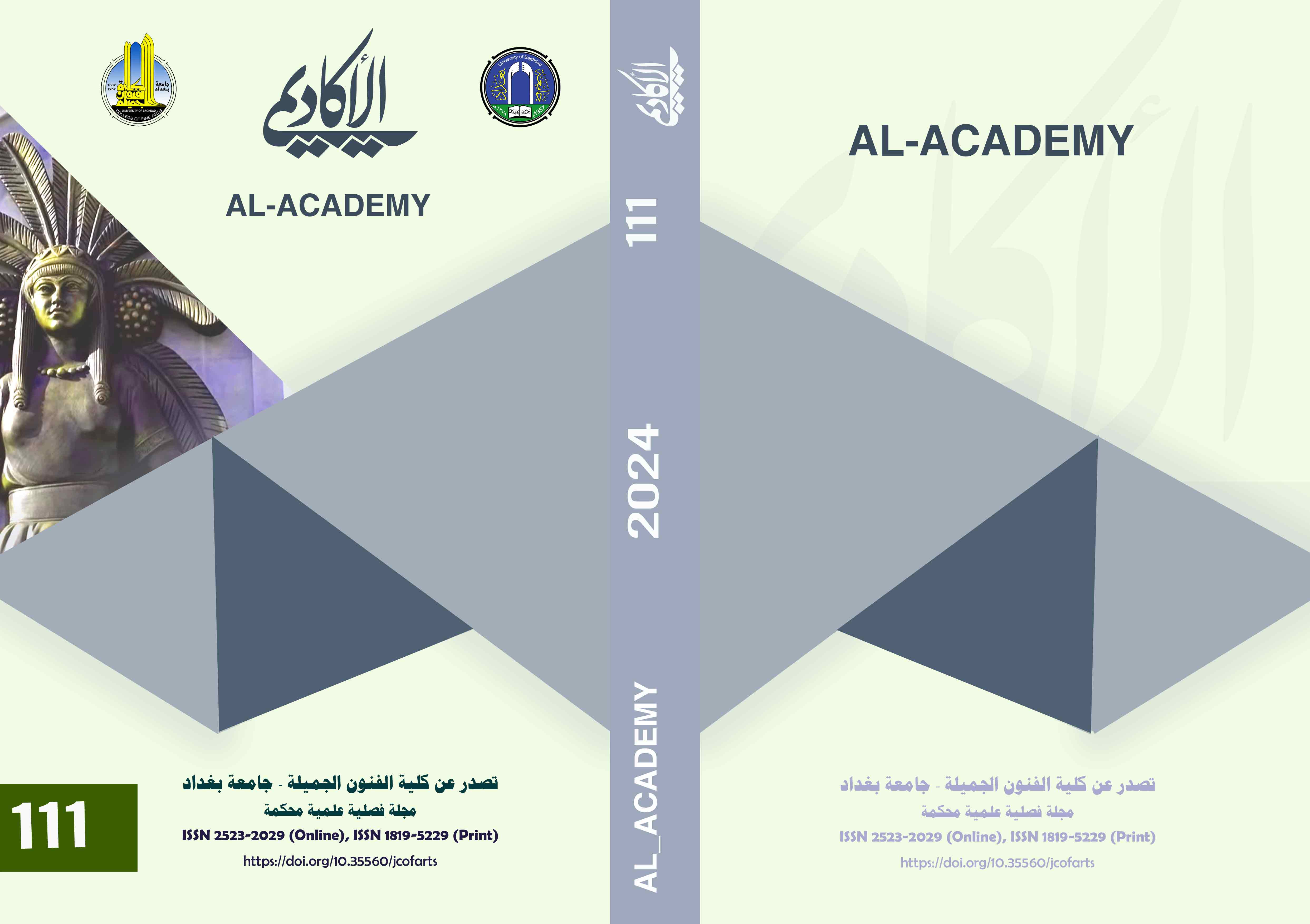Abstract
The Iraqi plastic movement began since the first half of the twentieth century, that is, nearly a hundred years ago. It passed through different stages and harbingers that changed its paths and the visions of the artists working from the generations of the last century. Therefore, the problem of tabulating and documenting these experiences and artistic uses that witnessed various political, unanimous and economic fluctuations during The recent decades, which constituted pressing and influencing factors on the human level and on the artistic achievement that expresses the concerns, alienation and suffering of the Iraqi plastic artist, and the loss of an important part of the formal aspect of the artistic image expressing the history and civilization of Iraq and the culture of its people, as well as the loss of much of the documentary aspect of that stage and a painful example of that It is the violation of the Museum of Arts during the American occupation in 2003 AD, and not long ago these pressures formed on the structure of the social and cultural stability of the country, which prompted many artists to migrate outside Iraq, causing the loss of an important part of the link between the generation of pioneers and the generations that follow, including some names The task from this stage is Salah Jiyad, Faisal Laibi, Noman Hadi, Ghassan Faydi, Karim Al-Asadi, Kazem Khalifa, Muhammad Faradi, Ali Fanjan, and others; Although the artistic style of these artists at this stage was clearly influenced by the methods of the pioneers, the impact of alienation and the influence of social culture and the Western environment was evident in those works later, and this does not mean that they left their Iraqi environment at all, but rather you find that their adherence to the civilization of Iraq In their different Sumerian, Babylonian, and Assyrian forms, it is clear with clarity, and evidence can be found for their adherence to their original Iraqi roots, noting the influence of the Western environment on the expressive and formal image of their works, which calls for this paradox for study and analysis.
Our research deals with one of the expatriate artists, Noman Hadi, who grew up in a stage in the middle of the history of the plastic movement, a member of the group of academics from the generation of the seventies, and through him we review the following question.
What are the stylistic features in Noman Hadi's work?
Our research deals with one of the expatriate artists, Noman Hadi, who grew up in a stage in the middle of the history of the plastic movement, a member of the group of academics from the generation of the seventies, and through him we review the following question.
What are the stylistic features in Noman Hadi's work?
Keywords
stylistic features Noman Hadi
Abstract
ابتدأت الحركة التشكيلية العراقية منذ النصف الأول من القرن العشرين أي ما يقارب المئة عام، مرت عبر مراحل مختلفة وارهاصات غيرت من مساراتها ورؤى الفنانين المشتغلين من أجيال القرن الماضي، وعليه تبرز لنا مشكلة تبويب وتوثيق هذه التجارب والاستعمالات الفنية التي شهدت تقلبات سياسية وإجماعيه واقتصادية متباينة خلال العقود الاخيرة، والتي شكلت عوامل ضاغطة ومؤثرة على الصعيد الإنساني وعلى المنجز الفني المعبر عن هموم وغربة ومعاناة الفنان التشكيلي العراقي وضياع جزء مهم من جانب الشكلي للصورة الفنية المعبرة عن تاريخ وحضارة العراق وثقافة شعبه و كذلك ضياع الكثير من الجانب التوثيقي لتلك المرحلة ومثال مؤلم على ذلك هو انتهاك متحف الفنون ابان الاحتلال الأمريكي 2003م، ومنذ زمن ليس بالقليل تشكل تلك الضواغط على بنية الاستقرار الاجتماعي والثقافي للبلاد، مما دفع العديد من الفنانين الى الهجرة خارج العراق، تسبب بفقد جزء مهم من حلقة الوصل بين جيل الرواد والاجيال التي تليه، ومنهم بعض الأسماء المهمة من هذه المرحلة صلاح جياد ، فيصل لعيبي، نعمان هادي، غسان فيضي، كريم الاسدي، كاظم خليفة، محمد فرادي، علي فنجان، واخرين؛ ورغم ان الأسلوب الفني لدى هؤلاء الفنانين في هذه المرحلة التي كانت متأثرة بشكل واضح بأساليب الرواد، الا ان أثر الغربة وتأثير الثقافة الاجتماعية والبيئة الغربية كان واضحا في تلك الاعمال فيما بعد، وهذا لا يعني انهم غادرو بيئتهم العراقية على الاطلاق بل تجد ان تمسكهم بحضارة العراق بصورها المختلفة السومرية والبابلية والاشورية واضح باسمرار ويمكن إيجاد الدلائل على تمسكهم بجذورهم العراقية الأصيلة، مع ملاحظة تأثير البيئة الغربية على الصورة التعبيرية والشكلية لأعمالهم مما تدعوا هذه المفارقة للدراسة والتحليل؛ ويُعتبر الفنان (نعمان هادي) معاصر لمرحلة ما بعد الرواد ومن المؤسسين لجماعة الاكاديميين في مقتبل السبعينيات، والتي تُعد من الجماعات الفاعلة والمؤثرة في الحركة التشكيلية، والفنان نعمان هادي من الفنانين العراقيين الفاعلين طوال العقود المنصرمة، حيث تظهر لدى المتابع تنوع موضوعات اعماله، وتنوع آليات الاظهار والخصائص الشكلية التي تتسم بها تلك الاعمال، لذا يتطرق بحثنا هذا عن أحد الفنانين المغتربين وهو نعمان هادي، لدراسة نشأته في مرحلة تتوسط تأريخ الحركة التشكيلية وأحد أعضاء جماعة الأكاديميين من جيل السبعينيات، ومن خلاله نستعرض السؤال التالي.
ما هي السمات الأسلوبية في أعمال نعمان هادي؟
ما هي السمات الأسلوبية في أعمال نعمان هادي؟
Keywords
السمات الاسلوبية، نعمان هادي
